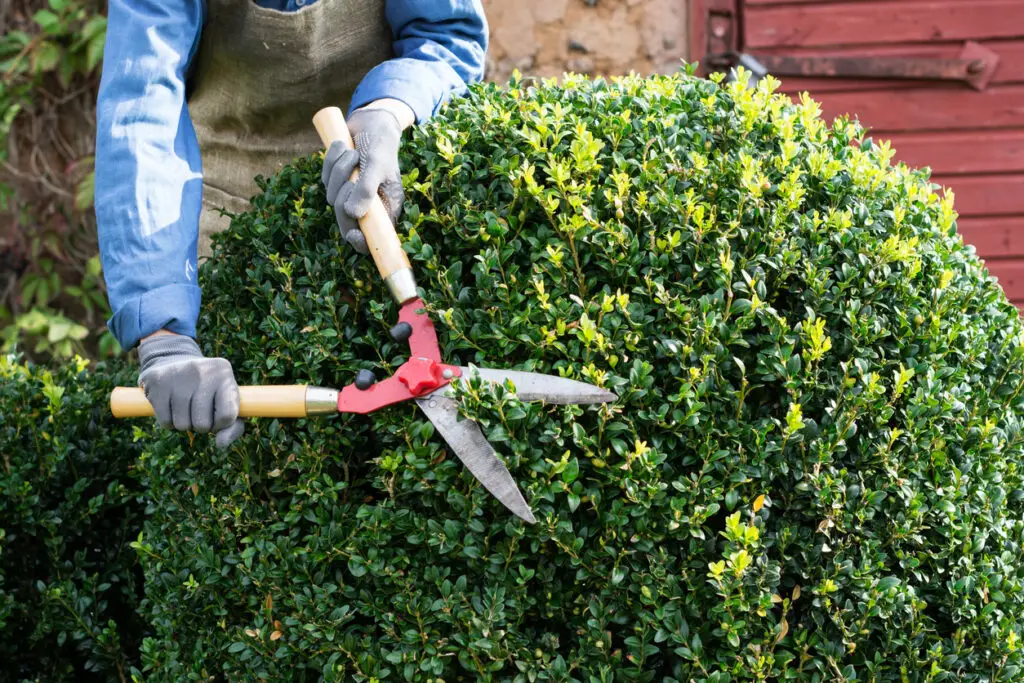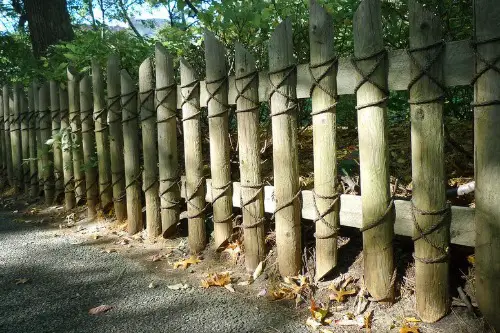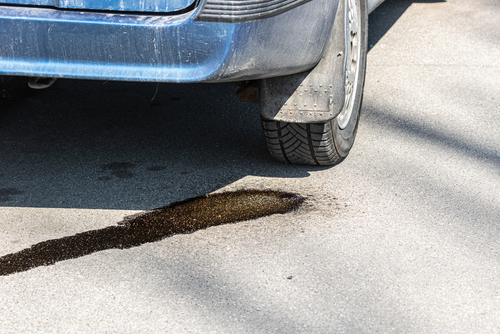1. Too Many Lawn Ornaments

A few tasteful accents add personality, but a yard crowded with gnomes, signs, or novelty items becomes visual noise. Buyers tend to focus on quirky collections instead of the property itself, which distracts from selling points. An overdecorated exterior can also make the space feel smaller and more cluttered than it actually is. Neutral, minimal staging helps buyers imagine their own furniture and style on the property.
Decorative clutter can also mask maintenance problems that buyers want to see before making an offer. Items shoved in corners or piled up suggest the seller was unwilling to prep for showings or had storage issues. Removing most personal decorations makes the yard read as a blank canvas instead of someone else’s personality. Pack away nonessential ornaments and keep just one or two tasteful pieces for character.
2. Overgrown Lawns

Nothing says extra work like a front yard that looks more like a meadow than a lawn. When grass reaches ankle height buyers immediately factor in hours of mowing, edging, and weed control. An overgrown yard also hides potential problems such as pests, uneven ground, and poor drainage that inspectors or buyers will worry about. Keeping grass trimmed signals routine maintenance and makes the property feel move-in ready.
Tall weeds and unkempt borders make the whole property look smaller and less cared for. Buyers often associate exterior neglect with deferred repairs inside the home, which can lower their confidence and offers. Even in a strong market, curb appeal influences whether people step out of the car to look more closely. A simple mowing, edging, and weed pull the week before showings is a low-cost way to avoid that negative first impression.
3. Dead or Dying Plants

Brown shrubs, wilting flowers, and empty planters drain a home’s curb appeal and make it feel tired. Buyers may assume irrigation, soil quality, or drainage problems are to blame, which suggests extra cost or effort. Dead plants can also create an impression of general neglect that raises doubts about indoor maintenance. Replacing failing plants with hearty, low-maintenance species is a factually simple fix that shows the property is cared for.
Even if the problem is only seasonal, visible plant decline still signals work to the buyer. Prospective owners mentally subtract time or money needed to revive the landscape when they see dying greenery. Presenting healthy plants instead helps buyers focus on the home rather than its upkeep needs. A small investment in fresh mulch and replacement plants often pays off in more confident showings.
4. Peeling Paint on the Front Door or Trim

Flaking paint on the front door, trim, or porch makes even a solid house feel tired and uncared for. Buyers see peeling paint as a visible sign of deferred maintenance and they start to imagine other hidden issues. The front door and trim are focal points, so their condition disproportionately affects first impressions. A fresh coat of paint is a relatively low-cost improvement that immediately signals pride of ownership.
Peeling paint can also expose wood to moisture, accelerating rot and insect damage if left unaddressed. Because it connects to potential underlying problems, inspectors and buyers often flag it in reports. Choosing a neutral, well-executed paint job makes the house feel modern and move-in ready. If repainting isn’t possible, at least scrape, prime, and touch up obvious spots before photos or showings.
5. Untrimmed Bushes Blocking Windows

Shrubs grown up over windows make a home look dark and closed off from the street. Buyers may worry about the house’s natural light and assume rooms are dim inside, which is a big turnoff. Overgrown plants can also hide architectural details that add character and value to the property. Trimming bushes back opens sightlines and helps the house look brighter and better proportioned.
Dense vegetation pressed against siding can trap moisture and invite pests, creating maintenance concerns. Those practical worries push buyers to imagine extra costs for pest control, siding repair, or pruning. Simple, regular pruning makes the property feel well-managed and prevents avoidable damage. Frame the house with clean, proportionate plantings to make it easier for buyers to evaluate the structure itself.
6. Visible Trash, Junk, or Yard Waste

Piled-up trash, old appliances, or yard waste in the front yard screams neglect and is an instant mood killer. Buyers may assume the interior has been treated the same way, or worry about odors and pest attraction. Showing a property with visible junk reduces perceived value and shortens the time buyers want to spend on-site. Clearing the yard and arranging a clean, neutral exterior is one of the most direct ways to improve showings.
Loose debris can also violate local ordinances or HOA rules, creating liability questions for buyers. Visible garbage suggests the seller either didn’t prepare or is unable to maintain the property, both red flags. Professional junk removal and a pressure wash can dramatically change first impressions with minimal expense. Present the home as cared-for to prevent buyers from inventing defects to justify lower offers.
7. Cracked, Uneven Walkways and Steps

Cracked or uneven walkways are an immediate safety concern and can be perceived as a sign of structural issues. Buyers worry about trip hazards and potential liability, which can reduce their willingness to bid. Sidewalks and steps connect directly to the buyer’s first physical interaction with the home, so condition matters. Repairing or patching obvious damage makes showings feel safer and more professional.
If cracks are caused by tree roots or settling, buyers may suspect foundation or drainage problems that are expensive to fix. Inspectors often note these issues, which translates into repair requests or lower offers. Even minor smoothing, sealing, or a clean replacement of a narrow path changes perceptions. Address visible hazards before listing to avoid giving buyers immediate bargaining leverage.
8. Leaning, Rotted, or Broken Fences

A sagging, broken, or rotted fence signals deferred maintenance and can make the yard look insecure. Buyers who value privacy or have pets will factor fence condition into their decision and their offer. Missing boards or warped posts suggest long-term neglect and the need for replacement rather than a simple repair. Repairing or replacing damaged sections shows the property is cared for and protects perceived value.
Broken fencing can also become a boundary dispute issue with neighbors, which buyers want to avoid. Fence repairs are visible, tangible costs that many buyers subtract from their offers during negotiations. A clean, straight fence communicates a maintained property and gives buyers confidence in the yard’s usability. Consider fresh stain or paint and tighten posts to make the fence read as secure and presentable.
9. Large Trees Too Close to the House

Mature trees are attractive, but when big trunks and roots sit close to the foundation, they raise legitimate concerns. Buyers worry about root damage to foundations, sewer lines, and underground utilities as well as costly removal. Overhanging limbs also present storm-damage risk to roofs, gutters, and siding that buyers factor into offers. Noting an arborist report or pruning problem limbs before listing can reduce buyer anxiety.
Excess leaf litter and sap also increase maintenance for gutters, roofs, and outdoor living areas. Tree roots can lift sidewalks and driveways, creating aesthetic and safety problems buyers notice immediately. A professional assessment and targeted pruning or mitigation options reassure buyers and inspectors. If removal is necessary, documenting the reasons and cost estimates ahead of time prevents surprises.
10. Poor or Broken Exterior Lighting

Dim, flickering, or nonfunctional exterior lights make a home feel less safe and less welcoming at dusk. Buyers evaluate neighborhoods and property security during evening showings, and poor lighting sends a negative signal. Lighting also highlights architectural features, so broken fixtures can hide curb appeal the house might otherwise have. Updating bulbs or replacing fixtures is a relatively inexpensive fix that improves perception and safety.
Exposed wiring or outdated fixtures can also be code or insurance concerns that buyers take seriously. An electrician’s sign-off or quick repairs make the property feel move-in ready and lower buyer objections. Well-placed porch, path, and accent lights also make a property feel larger and more inviting at night. Consider motion-sensor or timed lighting to enhance safety and reduce buyer worries about nighttime visibility.
11. Aggressive or Unrestrained Pets Visible in Yard

A loud, pacing, or obviously territorial dog in the yard can be enough to cut a showing short. Many buyers are wary of entering a property where they feel physically uncomfortable or threatened. Even well-meaning buyers may feel judged or unwelcome if the pet seems to dominate the space. Removing pets during showings or securing them offsite helps create a calmer environment for buyers to explore.
Visible tethering or a cluttered kennel suggests pet damage, odor, or hygiene issues that buyers factor into an offer. Buyers may ask for professional cleaning or pest inspections if they suspect damage or infestation from animals. Disclosing pet history while presenting a clean, odor-free home eases concerns without hiding facts. Neutral staging and temporary pet relocation for showings is a practical way to avoid scaring off potential buyers.
12. Oil Stains, Potholes, or Blocked Driveway

A cracked or oil-stained driveway is an immediate eyesore that suggests vehicle leaks or poor maintenance. Buyers often think about day-to-day practicality and see a damaged driveway as another repair to budget for. Tight, obstructed parking options reduce the property’s appeal to families or commuters who need easy access. Cleaning oil stains and fixing potholes are straightforward improvements that make parking feel reliable and cared-for.
Poor drainage in the driveway can also indicate larger grading or stormwater issues that affect the home. Standing water and erosion create long-term maintenance concerns buyers want to avoid. Patching, sealing, and re-grading where necessary demonstrates the seller has addressed these problems. A well-maintained driveway supports the overall perception of a well-kept property and removes a common bargaining chip.
13. Signs of Pest Activity (termite tubes, ant mounds, rodent burrows)

Visible signs of pests—termite tubes, carpenter ant frass, or rodent burrows—are often immediate deal stoppers. Buyers know pests can cause structural damage and often require expensive, invasive treatments to fully resolve. Inspectors routinely flag these issues, and lenders or buyers may demand remediation before closing. Addressing infestations and providing recent treatment reports reduces buyer anxiety and smooths negotiations.
Even small indications of pests can lower offers because buyers fear hidden damage they haven’t yet seen. Proof of professional treatment, warranties, and termite clearance letters are effective at restoring confidence. Regular pest control and careful yard maintenance prevent problems before they become a red flag during showings. Being proactive about pest signs is one of the clearest ways to avoid scaring buyers away immediately.
This post 13 Front Yard Choices That Scare Away Buyers Immediately was first published on Greenhouse Black.
